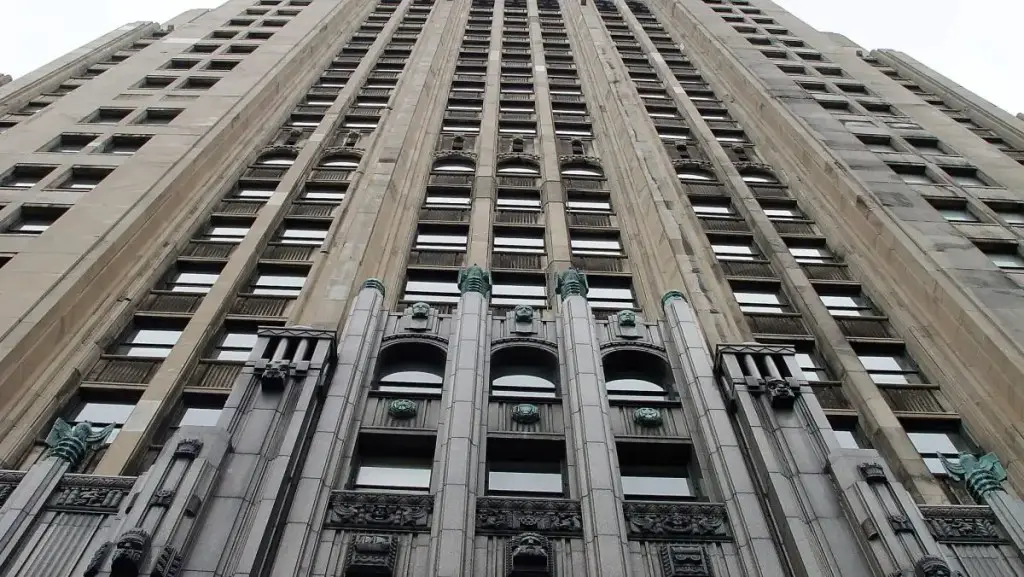What the heck is Night Flight 760? As a former student employee of WKAR-AM in the 1980s, I admired the strong radio personalities of the day. These were the waning days of the fairness doctrine, and just before the cheaply produced “talk radio” took over the AM band and killed a once-mighty medium. The top station in the biggest Michigan market, Detroit, was WJR, a 50,000-watt, clear-channel station that can be heard in more than 28 states at night — and its hosts were legendary.
High-Quality Productions and Talent Dominated the Airwaves

One must start with JP McCarthy’s incredible stamina of 30 years of hosting the morning drive time. J.P opened every show at 6:15 a.m. with the greeting to listeners, “Good mornin’ world,” and being the talent for a hard-hitting afternoon talk show called Focus. Karl Haas introduced me to the classics in Adventures in Good Music, and I will never forget Mike Whorf’s storytelling, historical perspective, and recordings of Kaleidoscope.
Later in the day, Jimmie Launce’s Afternoon Music Hall was a drive-time powerhouse for over 38 years. However, out of all the on-air WJR personalities, the one I admired most took the helm at midnight when the station could be heard all over the country and even across the globe – Jay Roberts and his fantastically formatted show of Night Flight 760.
The Soothing Format of Night Flight 760
Jay Roberts started his show with a background of a jet night flight to a different city every night. The show began with a whooshing takeoff sound effect and an airline hostess’s present voice issuing a welcome and instructions as though it was an actual flight. This was done during the days when jet travel was exclusive and dressy, and food was served on real china with silverware. Of course, it was also regulated and a bit expensive. During the flight, “Captain” Roberts describes the destination city of the night in detail.
Opening Theme of Night Flight 760
The format of Night Flight 760 was an overnight music program that played jazz and blues. This type of music had largely disappeared in the early 80s and was considered passé. In addition to great music, Jay talked about the area’s history, scenic features, attractions, and a bit of history. Just like a chatty Captain on some of today’s flights does. Of course, the latest news updates are interspersed every hour.
Jay, who is sensitive to the many personalities of night audiences, even tailored his music to the weather. If he has music set for a clear night and the weather turns bad, he chooses up-tempo music to keep people awake who could be driving. The night guard, the traveler, and the millions of people who make a living working in the dark hours of the day are among the listeners of Night Flight. “Thousands go to bed with him,” one magazine writer claimed of Jay.
Night Flight 760 is a perfect name for WJR’s all-night music program, considering that it came on at midnight and ended at the crack of dawn.
The End of Local Night Programming – and Jay Roberts.
I’ve learned that radio is the chase for ratings and cut costs. Sometimes it’s out of necessity, and sometimes it’s just to keep your listeners happy. For example, Jay Roberts was fired from WJR in 1987 when he refused to convert his show to talk radio which was all the rage in the 1980s. Instead, he transferred to Windsor’s CKLW mornings, resuming his casual, understated programming style until leaving in 1989.
50 Years Of WJR Summed Up
The back page of a 1972 anniversary booklet of WJR summed up what the station was all about. It was a perfect capture of WJRs personality of that time. It’s one we will unfortunately never see again.
THESE PAGES have presented the history of a fresh, clear radio voice that stands out from all the rest.
It is a unique voice with charisma that has been developing for half a century.
It is a great voice, befitting the Great Lake State in which it was born.
It is a powerful voice emanating from the gleaming, golden tower of the Fisher Building in the heart of the dynamic Motor City.
It is a distinctive, imaginative, provocative voice.
It is the voice of personalities. People.
It is “Rapid- Robert” Reynolds. The Kaleidoscope of Mike Whorf. The chuckle of Haas. The light touch of Guest. The songs of Harris. The cadence of Clark. The soothing voice of Roberts. It is the wit and humor of McCarthy, Launce, Paul Winter, and all the others.
It is the authoritative voice of news. White. Frenette. Taylor. Korzeniowski. And the other competent men. Unusual. Comfortable. Exciting. Warm. Personal.
A constant companion. An institution!
That’s WJR radio.
50 Year Anniversary of WJR 1922 – 1972
WJR’s Uncertain Future
Much of the high-caliber local talent is gone. Today the station fills its broadcast day with nationally syndicated programming with voices like Mark Levin and Michael Savage, and until his death, Rush Limbaugh. Thankfully, the morning weekday programs somewhat toned down with Paul W. Smith and Frank Beckmann (who passed away in February 2022). The afternoon broadcasts are hosted by more even-keeled former TV newscaster Guy Gordon and novelist and writer Mitch Albom.
WJR looks nothing like it did when it dominated the airwaves in the 70s and 80s. Back in the day, it was apolitical. You couldn’t tell if the talent or the message was a Republication or Democrat – but you knew it was Detroit.



